
|
ISMAIL KADARE
Helidon Haliti’s paintings make a man to stop in front of
them, maybe not knowing his name, age or birthplace. This is the first unrepeated act of art. An artist
owning this talent, let’s say, has the key of the enigma. We know these scenes;
we have met them on the world we are living, or deep in our consciousness.
However, we feel the need of staring again at them, in this second life of ours,
offered to us by the painter. In this case, this is made possible thanks to
Helidon Haliti, an Albanian painter of the new generation of 21th century. These
paintings, as well as the all arts, do and do not have a connection to life. To
be more precise, they are connected to life not by chain but by means of
freedom, that is a connection of the highest rank, the only one accepted by art.
September 9th 2008
|
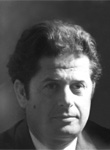
|
FASLLI HALITI
It was Eduart Mezuraj, who has expanded to Helidon Halitit the fragile wings of the artist,
it was he getting them longer, densifying them to him, being convinced that Helidon, a beautiful day,
would fly on the heights of art skies. He took him on the palms of his hands and threw him up to fly with the desire,
the certitude and his great patience, a characteristic of great wills thus Helidon reaches the creative apogee.
And Helidon flied and continues to fly up to artistic heights without any unnecessary noise and accompanied by his
genuineness that distinguishes him as a man and as an artist. Mother Teresa put all her humanism at poor people’s disposal,
Eduart Mezuraj is putting his humanism at talented and efficient artists’ disposal. Mezuraj is already an Albanian Tretjakov
that has assured his place at the beautiful history of art. Being his parent and as his first teacher during and after his
acceptance in the Art Academy, I have advised Helidon to: Exceed the defeat by working, while go through success by working.
|

|
VISAR ZHITI
POETI I NGJYRAVE
Piktori Helidon Haliti di të marrë dramë nga ngjyrat dhe t’u japë atyre një ndodhì të shtangur, natyrisht shpirtërore,
ndërsa shpirtit, trazimeve të tij, u jep ngjyrën e duhur, ato të çuditshmet, të mendimit.
Autoportreti i tij është një peizazh i shkëlqyer dhe peizazhet janë autoportrete të tij, të gjendjeve,
sa të ndryshme, po aq dhe befasuese, që aq sa të sprapsin, po aq dhe të tërheqin dhe shkak për të dy rastet është misteri i qetë.
Gjithmonë ka diçka të pakapshme, herë e stuhishme si dimri e herë vegimtare si ai tymi i hollë që del nga një oxhak i tij, që në fakt është një ndjenjë, një brengë.
H.H. e tejkalon natyrën, duke e ribërë atë, sipas një harmonie të veten, ku zotërohet dhe çrregulli, ndërkaq ngjyrat, pasi të godasin,
lëshojnë zhurmëtirë, zë largësie, borërimi, hijesh, resh, shteg drite, frushillimë rrote, qerthull vetmie, hapa, potkonj ballade, që avitet dhe e beson,
Helidon Haliti ka qenë piktor që pa lindur, poet i ngjyrave të tij.
|
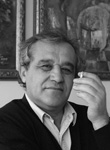
|
Dr. MOIKOM ZEQO
Helidon Haliti is one of the Albanian talented contemporary painters that has already achieved his success.
His immense creation enables us to speak about some fundamental characteristics, already consolidated ones.
This kind of creativity in different genres makes up something unique, unified. Talking about his creative typology,
with the maximal scientific accuracy of a researcher, I put emphasis on some main ideas: Helidon Haliti is a sensitive painter of landscapes.
He does not consider the landscape just as a kind of environment. Aquarelles is what I like most of his landscapes.
His technique used at the aquarelles is breathtaking; through them, one is able to understand his inner poetics and his mastery.
The aquarelles themselves contain the fluidity, but occasionally colours contrast too.
The colours seem to be absorbed and become scattered making possible relievo displays more understandable and more mysterious.
These aquarelles shed light on vast fields of Myzeqe, big trees and typical houses of popular character.
It does exist an intimate and genial rapport on these aquarelles. At this point is reflected the painter’s affection, his nostalgia.
|

|
SUZANA VARVARICA KUKA
Helidon Haliti, a modern painter, tries to paint day by day and to accept that his emotional visions are part of this huge world,
where placed as a whole and distinct. He has its own world of sentiments that occupy the most part of the existence on a painter.
They also give the general view of the composing personality to him. The most of Helidon Haliti’s sentiments demonstrate that he is
formed with a direction toward vigorousness relativity of colours proportion and full volume of these ones.
|
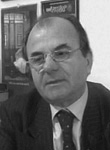
|
FERID HURDHI
Following the contemporary movement of Albanian art history, I realize that art of painting after 1991 is expanded in new dimensions.
Positively, one of the prominent painters from the new generation is Helidon Halit too. Helidon Haliti’s painting is very attractive for its colour,
topics and the real presentation, making an impression on everybody. He is on the right way and is exploring over and over again within its
own style to be always presented with its own pretentiousness.
|
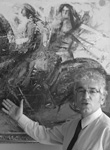
|
KUJTIM AHMATAJ
Undoubtedly, one of the most talented painters of these days, Helidon Haliti proves to be very successful.
His depictive world fascinates and warms. He does not know to rest, refuses to stop and his depictive cycles create his world.
This world is a sensible one, full of ideas, he appreciates the painting’s content and, it’s understood, its profile.
His incontestable merit is the continuous demand to affirm his style and personality.
This stays in connection with the mentality, concepts, inclinations.
Helidon Haliti is currently announced as a painter in search of coloristic poetry, his compositions peregrinate as in history as in mythology,
for being actual and breathtaking ones. I emphasize the fact that he is constantly in search and, in my opinion, this is the premise of a real artist.
He is an authentic Albanian painter, his collaboration with “Mezuraj Museum” does not happen by chance at all,
as it is meaningful and successful this catalogue that is his best and most dignified presentation.
|
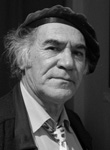
|
SKENDER KAMBERI
I have closely known as Helidon Haliti grew up as a man and its progress as an artist.
This double familiarization with him offers me the possibility to say out that Helidon Haliti is one of the more talented young painters of Albania;
he harmonizes the vivid life of colours with the moveable structure of graphics being heartily faithful to the line of a painting in a wide realistic sense,
in search of interior symbols. He has been a self-rigorous painter from year to year,
dedicating his artwork to new passages not only in topics but also in expressive means.
His paintbrush carries an internal concern, it does not ice up.
|

|
ARTUR MUHARREMI
Helidon Haliti is one of the new painters with high professional ambitions, an experimenting and self-rigorous painter.
Concerned all the time, graphically surprising and a fairly good colourist.
I have collaborated with Helidon Haliti in some exhibitions abroad. He is a painter that must take all the trophies pertaining to him.
|
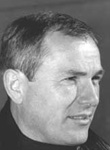
|
AGRON POLOVINA
I would like to add my compliments to the publication of this catalogue dedicated to the artwork of Helidon Haliti,
with which I had the chance to work during a long process of studying painting in school years and early ones. Since he was a student,
Helidon Haliti was a promising painter; he never stopped of studying to understand the great and lifegiving enigmas of depictive art.
He was confident he would absolutely achieve something, something that would make him distinguishable from others.
We, now, are eyewitnesses he has succeeded on this.
|
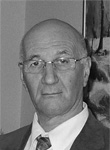
|
NESTOR JONUZI
Helidon Haliti composes an art full of requisites, he launches over canvas images of a clear world, he dexterously modelizes his visions.
His own style, without being eclectic, brings into evidence that he differs from the others.
He is totally a painter of paintbrush, without being influenced from the vogue of visual experimentation,
that these last years has caused a moving away from canvas. This stability characterizing him is meaningful and encouraging too.
He demonstrates his way of being very self-rigorous through his work not through words.
|
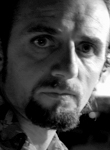
|
BILBIL MAZREKU
Helidon Haliti’s painting expresses the way he lives, he thinks, the way he loves people,
his fatherland and everything he is surrounded from. Helidon Haliti’s portraits have come from real life,
from pictures taken from him in the trips around the world, during which he continuously stopped and took in his sight and perception
focus the human side and not the superficial side of things. The masterly way of Helidon’s depictive performance is accompanied by
profound feelings and sincerity, giving to us colours contrast and the high taste of the events he lived and experienced by himself.
The expressivity, flights of Albanian legends on horseback, misticity, portraits’ magic that want to get out from the inset and to
speak out about their troubles, are wonts of a talented artist like Helidon Haliti,
which make his distinction on an artistic consideration point of view.
|

|
SHKELZEN MALIQI
Fjala në hapjen e ekspozitës “FABULOUS” në Prishtinë, Kosovë
Stili i pikturës së Helidonit është ai i një surealizmi paksa të frenuar që mund të quhet edhe realizëm magjik.
Ai frymëzohet edhe me tema të tabanit kombëtar dhe ato të një mitologjie të personalizuar dhe intime.
Mirëpo, piktori ka kujdes që të mos bie në patetizëm dhe folklorizëm, duke preferuar ilustrimin nga një pikëshikim i padjallëzuar prej fëmiu.
Dhe sikur që ëndrrat janë refleks të emocioneve nga realiteti,
ashtu edhe këto ëndrra pikturale të Helidonit reflektojnë ngjarjet dhe emocionet nga jeta.
Në ciklin e pikturave me anijen që përmbytet në det,
ai kujton tragjedinë e njohur Otrantos dhe në përgjithësi tragjedinë e eksodit shqiptar.
Është një homazh subtil për viktimat.
Motivi më i shpeshtë është shtëpia, si një simbol i sigurisë, ose i gjakimit për siguri.
Shtëpia si simbol qëndron kundrejt rreziqeve që vijnë gjithandej, nga stuhitë e jashtme,
përmbytjet dhe vërshimet, ose nga përbindëshat,
dredhitë e zotave dhe të njerëzve, por edhe zjarret dhe konfliktet e brendshme.
Ndër pikturat e Helidonit janë dy që unë i shoh si emblematike: janë ato me rrethe,
gjysma e të cilëve është e përmbytur, nën ujë, dhe gjysma tjetër mbi ujë,
me disa shtëpi-kuti me çati të kuqe poshtë, në mes, dhe lartë.
Këtu sikur shohim atë rrethin e fatit rrotullues e çdo ekzistence dhe e çdo sigurie.
Një “mësim” piktural se herë mund të jemi në maje të bregut, e herë të katandisemi në fund të pusit.
|

|
KONSTANDIN DHAMO
Peneli i Helidon Halitit,
Le të përmendim, fjala vjen, pemët, pemët herë të shkrumbuara e të hirnosura nga pasojat e tmerrshme të smogut, here si shtëllunga atomike dhe, herë të tjera, të blerta dhe të njoma, si për të dhënë një shpresë e një mesazh ekologjik…
Pastaj arkeologjia e vyer, gjithë visare dhe kumbime shekujsh e legjendave të kombit, moralin e të cilave, piktori jo më kot ia vë përballë jetës së sotme pa fisnikëri, pa ndershmëri dhe, të deheroizuar.
Metafora e besës, Doruntina dhe Konstandini na shfaqet përsëri mbi një kalë gjithë xixëllima fosilesh fosforeshente, i cili trokon mbi pellgje të pambarueshëm gjaku, të derdhur dhe të mbetur aty – këtu nëpër fushat e historisë. Në këto tablo të rrugëtimit të legjendës, rrallëherë gjen akord të vijueshëm koloristik; në këto tablo më së shumti ka disonanca të ashpra dhe prerëse që të rrëqethin dhe, ai gjaku i hiperbolave poetike të duket sikur derdhet nga kornizat, të stërpik e të ngjitet aq sa nuk mund ta shqitësh…
Janë tablo që të duket se, po t’i bashkosh copa – copa, do të formohet sërish barka e Noes, që shpëtoi gjallesat. Në këtë cikël ngjyrat janë të kursyera, nuk kontrastojnë dhe, të kujtojnë, ashtu me atë murrëtirë prej balte, rrasat e stërlashta të Babilonisë, mbi të cilat është shkruar së pari rrëfenja e kataklizmës. Gati – gati të zë paniku tek kalon tablotë e këtij cikli aq sa beson se, kur të dalësh në rrugë, nuk do të gjesh më as bar dhe as jetë…
Ky artist emisar nuk e shpërndan dritën në tablo me densitete të ndryshme, për të krijuar thellësi dhe perspektivë. Kësisoj, objektet janë të vendosura të gjitha në plan të parë dhe, vepra në çdo rast, i shmanget natyralzimit dhe banalitetit të riprodhimit fotografik. Ndërsa deformimet anatomike nuk janë asnjëherë qëllim në vetvete, apo një manierë estetizante; ato vijnë si një shprehje e emocioneve të forta dhe përcaktojnë psikologjinë e personazheve…
|

|
ILIR LEVONJA
HELIDONIZMI, gazeta Ballkan, 5 maj 2010,
Atëherë a nuk bëhet naive pyetja, ''A ka rëndësi piktura?!'', apo tjetra se ''A mund ta transmetojmë pikturën?'', ose-ose, ''A mund ta tregojmë pikturën?''..., etj. Në këtë këndëvështrim, i transportueshëm, që domethënë i tregueshëm, ndodh' sekuenca e përvetësimit artistik si dukuri, me një vetdije njerëzore, natyrshëm për shkak të kuorumit mes artistit dhe admiruesit. Kjo është mbresëlënëse prandaj edhe ne e përjetojmë derisa ndihemi të mbushur emocionesh. Unë do theksoja se këtu qëndron edhe helidonizmi në aspektin parësor atë që, e impresionon shikuesin. Ia merr atij vemendjen dhe ai dalldis nëpër larminë e tematikave, trajtesat e alternuara, simbolet e forta apo pejzazhet që kanë tinguj akuareleskë, pranverorë, pavarsisht teknikës në vaj e kanavacë, po kështu edhe në tabllote me elementë antike ku pesha e gurit sillet me lehtësinë e ngjyrës.
Duke iu kthyer galerisë së tij, një element tjetër që forcon dualitetin e përkorë midis poezisë dhe pikturës, është piktura me temë ciklike si ''Dritarja e verdhë'', ''Dritarja e kuqe'', apo ''Mëngjesi'', ''Perëndimi'', ''Shtëpia e saj'', ''Rrethina ime'' etj..., të cilat të kujtojnë tabllote e epike në eposin e lashtë. Kurse në vitalitetin e kontrastit krijon surrealizmin artistik të tipit Eluar, me poezinë që ne trajtuan më sipër. Sidoqoftë, përfytyrimit tonë i rri në krah shtrirja interpretative, përderisa vazhdojmë të zbulojmë pjesmarrje të reja, por në të njëjtën kohë ose paralelisht, ne jemi duke përjetuar ngjyrat.
Rendja ciklike e tablove të tilla i kapërcejnë kufijtë e epikës si dimension dramatik, ato kanë krehje lirike në këtë trajtesë, finesë poetike, prarime ngjyrash dhe soft intim për nga ndjenja idilike; domethënë që , universalizojnë ekzistencën fragmetare të një aspekti telajosh, subjekti bojrash, apo asaj që duket në atë që është. E kam fjalën tek qëllimi artistik i përftuar nga kjo panoramë ciklike temash dhe përmbajtjeje. Si përshembull, ''Shtëpia e saj'', ''Rrethina ime'', tymnajat e oxhakëve krijojnë elemente njerëzore përmbi çatitë, teshat e nderuara, silutetat në ecje e sipër dhe dritaret me fytyra vajzërore. Ngjyrat këtu bëhen pjesë e vjeshtës ekzistenciale, të atij momenti të përjetshëm, për të cilin Kamyja do të thoshte se, ''Vjeshta është një pranverë e dytë, kur çdo gjethe bëhet lule''.
|
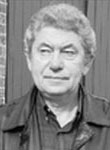
|
ROLAND GJOZA
Ati, biri dhe piktura e shenjtë, Milosao,prill 2010,
Në ketë ekspozitë të Helidon Halitit të vjen të hysh në një mënyre surreale; ju lutem, hiqini këpucët, sikur dëgjon një zë fëmije, se do të keni të Beni me fushën, barin, shpendët, kafshët shtëpiake, gjithashtu do të zbrisni në moshë, ej, ju me gravata e me kostume, hiqini, nuk shkojnë, qe t'ju bind, po ju them se Sarkozi, Presidenti i Francës dhe e shoqja, topmodelja e famshme, Karla Bruni e kryen këtë rit dhe pas asaj shëtitjeje të çuditshme nëpër përralla e mite, Sarkozi u kthye me një gjel myzeqar, me një nga ata lloj gjelash luftarakë dhe dashnorë që arrijnë të shkelin gjer në dyqind pula në ditë dhe të plagosin trimërisht me sqep. Atje e keni ketë gjel, po të jeni kuriozë të dini më shumë, në Pallatin Elize.
Greqia i dha gjithçka Helidonit, kjo qe përshtypja e tij e fillimit, atje iu hap tapa flakonit të parfumit të mitit dhe legjendës greke, atje pa antikitetin, turistin e etur për lashtësi, këmbën ( kujtoni tablonë këmbët) e tij që shkelte mbi gjurmët e vjetra të Sokratit e Perikliut, po pak, shumë pak pa, nga ato qe i kishin mbetur prej Myzeqesë në fëmijëri. Në ishujt kishte shumë modernitet, megjithatë. Antika ishte në Shqipëri, në kujtimet ende me vesë. Faleminderit, baba! Jo, toka e premtuar ishte te kthimi, te ati. Dymbëdhjetë vjet për të kuptuar zërin. Ai qe shqiptuar më në fund.
|